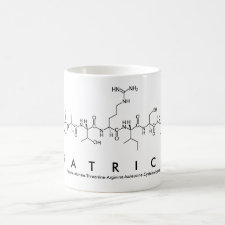
Authors: Bers K, Eersels K, Van Grinsven B, Daemen M, Bogie JFJ, Hendriks JJA, Bouwmans EE, Püttmann C, Stein C, Barth S, Bos GMJ, Germeraad WTV, De Ceuninck W, Wagner P
Article Title: Heat-Transfer Resistance Measurement Method (HTM)-Based Cell Detection at Trace Levels Using a Progressive Enrichment Approach with Highly Selective Cell-Binding Surface Imprints.
Publication date: 2014
Journal: Langmuir
Volume: 30
Issue: (12)
Page numbers: 3631-3639.
DOI: 10.1021/la5001232
Abstract: Surface-imprinted polymers allow for specific cell detection based on simultaneous recognition of the cell shape, cell size, and cell membrane functionalities by macromolecular cell imprints. In this study, the specificity of detection and the detection sensitivity for target cells within a pool of non-target cells were analyzed for a cell-specific surface-imprinted polymer combined with a heat-transfer-based read-out technique (HTM). A modified Chinese hamster ovarian cell line (CHO-ldlD) was used as a model system on which the transmembrane protein mucin-1 (MUC1) could be excessively expressed and for which the occurrence of MUC1 glycosylation could be controlled. In specific cancer cells, the overexpressed MUC1 protein typically shows an aberrant apical distribution and glycosylation. We show that surface-imprinted polymers discriminate between cell types that (1) only differ in the expression of a specific membrane protein (MUC1) or (2) only differ in the membrane protein being glycosylated or not. Moreover, surface-imprinted polymers of cells carrying different glycoforms of the same membrane protein do target both types of cells. These findings illustrate the high specificity of cell detection that can be reached by the structural imprinting of cells in polymer layers. Competitiveness between target and non-target cells was proven to negatively affect the detection sensitivity of target cells. Furthermore, we show that the detection sensitivity can be increased significantly by repetitively exposing the surface to the sample and eliminating non-specifically bound cells by flushing between consecutive cell exposures
Template and target information: mammalian cells, Chinese hamster ovarian cells, CHO-ldlD



Join the Society for Molecular Imprinting

New items RSS feed
Sign-up for e-mail updates:
Choose between receiving an occasional newsletter or more frequent e-mail alerts.
Click here to go to the sign-up page.
Is your name elemental or peptidic? Enter your name and find out by clicking either of the buttons below!
Other products you may like:
 MIPdatabase
MIPdatabase









